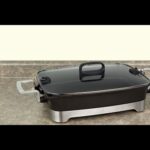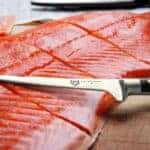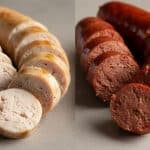Silicone Cake Pans
Are silicone cake pans safe? Synthetic “rubber” made of silicon…
…and oxygen and, in certain situations, carbon is known as silicon dioxide (SiO2). Oxygen, silicon, and carbon are all natural components that can be found in sand and rock, but silicone bakeware can contain a wide range of other materials.
In general, silicone cake pans or any other silicone bakeware is heat-resistant, freezer safe, and oven safe, but only up to 428 degrees Fahrenheit or 220 Celsius. It shouldn’t be put in the dishwasher, however, and as it doesn’t biodegrade and cannot currently be recycled, it’s not exactly eco-friendly.
Silicone cookware also needs to be dried well before being stored, or it may degrade and develop discoloration and tackiness. I’ve had this happen to a couple of silicone cake ‘pans’, so I learned my lesson and store them more carefully. So carefully, in fact, that I rarely ever use them and should probably take them to the thrift store. In here, we have an article about best cake pans that you might want to see about it.
Are silicone cake pans safe?
There’s very little to suggest that silicone cake pans are unsafe, but there’s also not much to confirm its safety either. What’s more, there are huge variations in the quality of silicone cookware, with cheap, low quality alternatives full of fillers and binders most frequently cited in concerns over odors and poor performance.
Silicone cookware must pass a purity test.
Give it a twist to see if your silicone baking pans are pure. White streaks indicate that the silicone has a lot of fillers in it, which indicates it may not be safe to use in the kitchen or in the oven.
You should always make sure that the silicone kitchenware you purchase is 100% pure food-grade silicone. In the opinion of Canada’s Health Canada, this is safe to use up to the authorized temperatures and does not react with food or beverages or cause toxic odors.
The FDA’s stance on silicone cooking utensils
It was ruled in 1979 by the FDA that silicon dioxides (the basic ingredients in silicone cookware) were safe to use as food-grade materials. Since the 1980s, when the FDA first began selling silicone spatulas, no further safety tests have been undertaken on this type of cookware.
Leaching is the subject of much debate
Compounds or chemicals that aid in food release are commonly found on food-grade silicone cookware. Studies that employ exaggerated language and test conditions that don’t mirror real-life use aren’t helping the discussion about whether these coatings end up leaching into food, as detailed in this paper.
Silicone in Bakeware: Is There a Risk?
Silicone’s safety has yet to be scientifically proven, but it doesn’t mean it isn’t a safe product. The following are some of the possible dangers:
- At high temperatures, leaching can occur.
- Substandard silicone is filled with fillers.
- High-temperature application may result in an unpleasant smell.
Even if these concerns have not been proven, they are worth studying further.
The advantages of using silicone baking pans
With muffin cups and bread pans, silicone bakeware is regarded to be more non-stick than many other forms of bakeware.
Using silicone baking mats and accessories makes cleanup a breeze, and they don’t adhere to your baked goods too. Because of their flexibility, silicone bakeware and molds are easy to remove from baking pans and easier to clean. As a bonus, silicone is dishwasher safe and does not fade or damage.
Our Latest Post:
💻Garlic Press | Pressure Cooker | Deep Fryer
Was this helpful?
Hi there! I’m a food enthusiast and journalist, and I have a real passion for food that goes beyond the kitchen. I love my dream job and I’m lucky enough to be able to share my knowledge with readers of several large media outlets. My specialty is writing engaging food-related content, and I take pride in being able to connect with my audience. I’m known for my creativity in the kitchen, and I’m confident that I can be the perfect guide for anyone looking to take their culinary journey to the next level.









